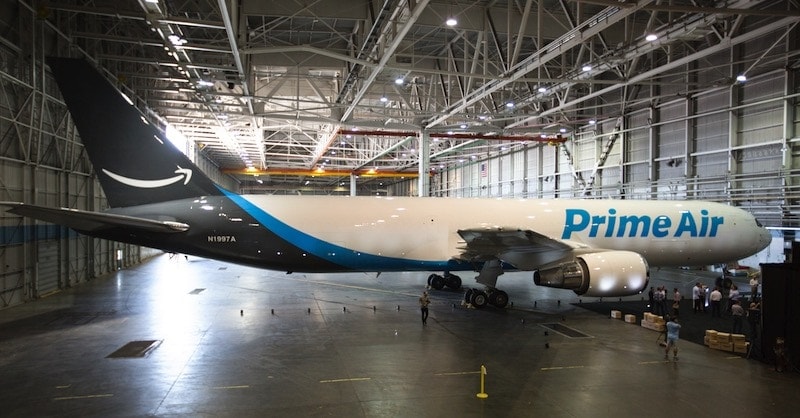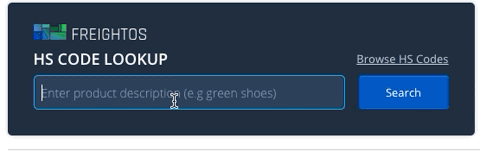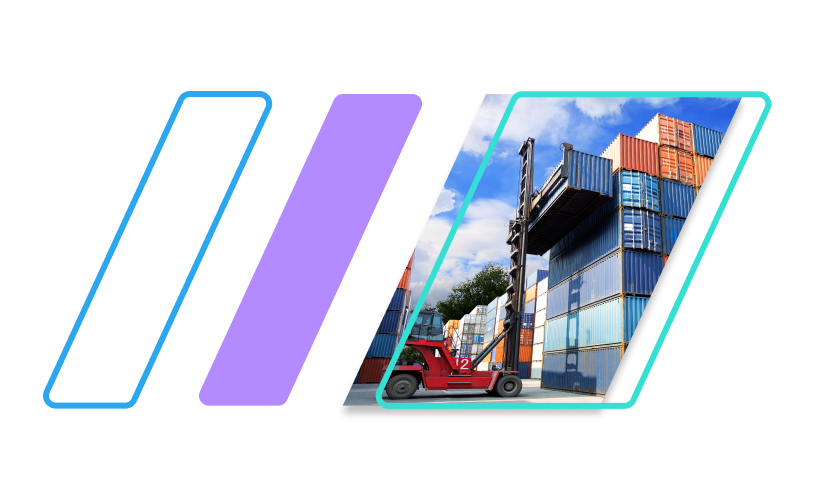As we enter a new year, it’s a great time to look back at how far we’ve come as an industry, set our next goalposts, and map out where we should be as an industry by 2020.
The journey to digitize freight, while initially off to a slow start, has gained momentum in the last two or three years.
But the road to true digitization is long and winding.
We have a ways to go and the world won’t necessarily wait for us to catch up, especially with external entrants to the industry that will certainly try to get there first.
Amazon is coming.

Let’s not wait for them.
Let’s modernize on our own terms.
It should come as no surprise that we are running out the clock until Amazon competes with more aspects of the logistics industry. As you know, Amazon received an NVOCC license. They’re licensed to be an ocean freight forwarder, and they’ve bought some aircraft and an airport; and of course they are a huge warehousing player.
They’re coming. Actually they’re here.
It is our job as an industry to create an Amazon-like experience ourselves first.
Just look at how their assistance worked out for Toys “R” Us and Sears. It won’t be good for many industry players if we don’t work together to build a modern shipping experience with the end user at heart first on our own.
At our FreighTech 2018 conference, I spoke to 50 top-tier logistics executives about the major themes – four of them – that should guide our evolution.
In order to avoid trite generalities, I broke each one down into four subcategories, (see where the 4×4 came from?).
So without further ado, here are sixteen things we need to focus on today to further improve, and ultimately close, the digitization gap industry-wide arranged in four themes of four.
Four Core Themes Shaping Logistics:
1.Customer Experience
1.1 Online freight booking
Millennials make-up almost 50% of today’s workforce and that number is growing, along with expectations for convenient, on-demand and digital services. When it comes to freight, we aren’t equipped to meet these expectations and we can’t risk ignoring millennials; we need to evolve and catch-up with customer expectations in order to thrive in a changing world.
This customer segment is incredibly important and if younger shippers can’t book a container and track its whereabouts on their smartphone (while they’re taking a group selfie!) then they’re not going to use your service.
See the 2018 State of Online Freight Sales
1.2 Self-service support and document management
I’m really proud to see and work with or alongside some industry leaders who are already implementing this philosophy. Kuehne+Nagel was one of the first big freight forwarders to have price quotes and self-service directly on their homepage. Agility, a top-20 forwarder, using a different brand called ShipA, now offer quotes for all modes on their website. Hapag-Lloyd is also important to name. They are apparently doing significant volume on their website.
Customer experience needs to be online, self-service, transparent, and automated. Think retail.
1.3 Visibility (Track-and-Trace)
Freightos independent research shows 83% of shippers lack full milestone visibility. There isn’t proper track-and-trace door-to-door. Despite this being a legitimately challenging feat, a good track-and-trace solution/standard is critical if we want to keep up with our customers expectations and our changing world.
1.4 Automated back office
The least sexy part of a modern customer experience, but the most important in some ways, is back-office related. We’ve all been in offices that are still full of old folders. Today, half of the air way bills are paper and most of the bills of lading are paper. Not to mention price quotes and other paperwork, customs forms, certificates of origin. There is still a lot of paper in this industry.
My team made a simple calculation of how many employees it takes to ship a package express versus shipping a container. If you look at UPS, FedEx, or DHL, you’re talking about approximately 8,000 packages per employee per year. When you look on the freight side, at a top freight forwarder to see how many employees it takes to ship a container, the gap is staggering. There is at least 100 times more manual work per shipment in freight forwarding than in Express. And there is no inherent reason for this discrepancy. The freight forwarding industry must catch up and close the gap.
2. Technology

Containers aren’t changing. They’ll probably still be 40-feet long in 20 years. But everything around how we manage them has started to change and must change in a big way.
2.1 Open data standards
There’s a lot of talk about AI, blockchain, and the internet of things; those are very important, but the thing missing most in this industry, is open data standards.
Think for a moment about what open standards have done for other industries.
TCP/IP brought us the internet. Every computer in the world can talk to every other computer in the world.
HTML brought us the web. Anybody in the world can read the webpage of anyone else in the world.
There are so many other standards, JPEG, MP3, the cellular standards and Wi-Fi, any one of them is an open standard that can be found and downloaded from the web, ready for implementation.
To some extent, our industry had an open standard, EDI. Unfortunately, it is old, inconvenient, and narrow, especially by today’s technological standards. Despite those pitfalls, it’s still used quite a bit. But, it’s really time we create some new, open and modern standards for the industry.
2.2 Big data and AI
It’s incredible to see how accessible and affordable data has become in such a short time. I’ve been in tech for a while and I remember when data was incredibly expensive. Today EVERYTHING is in the cloud; trillions of records. With a few simple clicks, we can analyze data every which way without stopping to index anything and without worrying about budget.
At Freightos, data is critical to our mission to make global trade frictionless.
A recent data-driven AI initiative we took on involves HS classification codes for shipments going through customs. Our team was able to take the description from about three million bills of lading, the English description and HS code, and train an artificial intelligence to recognize the HS code from the English description. So, if a written description is “Heineken”, our AI has learned that Heineken is a beer and can give it the correct customs classification.

2.3 Internet of Things
From monitoring equipment failure to real-time assessments of the safety and quality of food and pharma products, to AI predictive analytics on theft and accident vulnerability, IoT solutions will undoubtedly garner greater peace of mind and cost savings for stakeholders throughout the global supply chain.
Several companies in the logistics technology space are trying to create affordable, reliable, track-and-trace solutions where people can track their own shipments without relying on the freight forwarder, shipping line, or trucking company. Monitoring container temperature and humidity in a cost-effective way is becoming more cost efficient by the day. We were pleased to host one of them (Loggino) at FreighTech 2018.
2.4 Smart Contracts
We’ve got a strange issue in this industry where contracts aren’t honored. Independent Freightos research shows that 60% of people have experienced a breach in their tender agreement in the past year alone. This is mostly due to seasonal surcharges being added or capacity being denied. This undermines the whole point of a fixed price tender.
Similarly people agree to a price for a spot quote and then there’s a general rate increase (GRI) or it doesn’t sail when they thought it would sail. Actually twenty years ago this kind of thing was fairly common in passenger travel. When a flight was overbooked, you didn’t board. Now it is extremely rare. Conversely you could no-show for a flight and arrive the next day and they would often honor your ticket. Today, you buy a seat on a plane and the seat is there waiting for you. You don’t show up, you forfeit your ticket.
Other industries have managed to create clear, two sided commitments. In this industry, that’s still uncommon. We need more formal contracts. For that we need data standards. Blockchain provides a very advanced solution but a simple standardized contract with digital signatures can also provide a sufficient solution.Ultimately we could use real smart contracts where a computer determines who owes what.
3. Commercial Structure

3.1 LSP Global P&Ls
Many freight forwarders and logistics companies are set up in a way where each country has its own profit and loss. What happens as a result is that each country sees the other as a customer.
The last thing you do with your customer is to share your net rates. You never tell your customer what your buy rate is.
My team and I have done some big rollouts with freight forwarders in dozens of countries who use our software to manage rates and automate price quotes. It is not uncommon for us to experience push back when we try to share rates within the same organization, but in different regional offices.
The push back is that each country doesn’t want the other country to see their net rates because the other country is their customer. They are all buying and selling from one another. This structure creates a lot of conflict. One country over chargers the other and they both lose the deal.
Other forwarders are implementing a more successful strategy of sharing profit on each transaction between all countries involved.
3.2 Two-sided commitment
As I mentioned earlier, other industries created clear, two-sided commitments, many years ago. Now let’s talk about the change to the commercial structure, starting with pricing.
If I book something, I want to know that it’s booked. I want to know it’s going to fly or ship when I’m told it will. Unfortunately we’ve accepted that there will be GRIs and containers will be rolled, especially during peak season. It’s really quite absurd when you think about it. Imagine ordering a pizza from a menu and by the time it arrives there’s a GRI.
Our latest partnership with CMA CGM, the third largest ocean carrier in the world, is a step in the right direction. If you book with CMA CGM via Freightos.com, your shipment is guaranteed to be on the ship when you scheduled it to be on the ship and you pay what you were quoted. It’s not subject to GRIs. It’s not subject to rolling. Simple and yet a profound improvement.
This is great news for CMA CGM, too. A big problem for them is containers not showing. This agreement guarantees that the container will show up. If not, CMA CGM gets financial compensation. The shipper is guaranteed that there’ll be an empty slot waiting on the ship. It’s a simple win-win for both sides.
It’s not just about technology. It’s also about how we organize ourselves as an industry.
3.3 Dynamic pricing
Dynamic pricing is still incredibly rare with the carriers, and also pretty rare with the forwarders, but, in the end, it starts with the carriers. We’ve seen it in passenger travel. EasyJet, for example, uses dynamic pricing. Minute by minute, they check how much space is available on a flight. They can then project the demand and decide whether to raise or lower the price. This model works incredibly well.
We work with a few airlines who give us rates electronically in real time; in theory it could be dynamic, but we’ve noticed that rates don’t actually change from one day to the next. Perhaps there’s still an Excel sheet behind it, but at least we’re connecting in real time. Every time someone searches on Freightos.com, in real-time we speak to the airline and check the rates. As I mentioned earlier, we’re doing that with CMA CGM as well. It’s only a few airlines and one ocean carrier, and the rates are not truly dynamic on their side, but it’s a great start. In 2019 I hope to see some real-time dynamic pricing from at least a few airlines and ocean-liners.
3.4 Index linking and derivatives
Fixed price tenders are broken. If spot rates go down the shipper feels stupid for paying the tender price. Many will simply go off-tender and buy spot. If prices go up, the carrier regrets the tender and will often roll the load in favor of better paying spot business.
Other industries have found the solution. Long term contracts are index linked instead of fixed price. And financial derivatives are introduced so that both sides can still protect themselves from price changes and hedge their risk.
Industry data, indexes and derivatives will eventually enable the industry to move to dynamic pricing instead of fixed-price tenders that really don’t work. This is a key focus for Freightos in introducing the Freightos Baltic Index (FBX) and working with our investors at the Singapore Exchange (SGX) towards derivatives.
4. Culture

4.1 Transparency
This industry is a little nervous about transparency. People consider it a little bit of a dirty word. As an industry, we are still somewhat secretive and relationship-based. It is still common practice to negotiate tenders privately at industry events. Everyone expects their negotiated rates will remain private, but that, too, has begun to change. At TPM 2018, DB Schenker CEO Jochen Thewes, the third biggest forwarder in the world, spoke publicly about the need to embrace transparency, not fight it. That’s a very different message then we were hearing five years ago.
I’m not saying that everything should be public. Freightos, for example, manages a lot of private data. We have well over a billion price points in our database and, frankly, 90% of them are still private. We still manage a lot of secret prices for our customers, and that’s okay. When something is private, we keep it private and we respect that. We’re not saying that we move to transparency in one go; we’re not saying that there aren’t any more secrets. There will still be secrets for a long time.
But from my perspective, if you’ve got the best product and the best service and the best price, transparency is a wonderful thing because everyone can see you’re the best.
If you’re efficient, transparency is great. If you’re inefficient, and your back office is still manual, and you know your containers are getting rolled, then transparency is not a good thing.
Freightos has taken a major first step publishing quite a number of prices on www.freightos.com in full coordination with our partner carriers and forwarders.
Transparency is coming and that’s a fact. Let’s prepare ourselves.
4.2 Agility
We live in a dynamic world, yet our business practices are far from dynamic. If the recent trade wars showed us anything, it’s that we need to adopt a culture of agility to adjust to our changing world in real-time. It’s imperative.
When we work with logistics service providers we rarely experience agility. Instead organizations are battling inertia. That needs to change.
As an industry we have some four letter words.
4.3 Accountability
I’ll use the Express industry again as an example. UPS, DHL and FedEx, are all known for providing various kinds of money back guarantees. That practice has been around for awhile. But this concept is very rare in our industry.
APL, which is part of CMA CGM, experimented with offering a definite arrival time, or your money back. And it was actually the only time I’ve seen an ocean carrier, or an air carrier for that matter, offer a money back guarantee. I don’t know if that’s still running and if it’s popular and successful but I certainly commend the direction.
4.4 Sustainability
Our planet is under threat, and we have to create ways to reduce our industry’s negative impact on the environment. Our carbon footprint is growing quickly across all transportation modes.
On the positive side, there are a lot of exciting innovations happening. For instance, Maersk’s rotary pillar, which acts as a modern-day sail and has been reported to save up to 30% in fuel usage when the conditions are right. Tesla and their electric semi truck. Platooning, convoys of trucks driving close together to reduce air drag and fuel usage, like cyclists in the Tour de France, will be feasible once autonomous technology is viable. These are all great initiatives.
But there are some detrimental innovations as well. Bitcoin, with it’s proof of work version of Blockchain, is a totally unnecessary pollutant. The amount of electricity that goes into mining bitcoin is more than the electricity needed to power Ireland. There’s a country’s worth of electricity being wasted on artificial computations with no meaningful value.
Fortunately there are variants of Blockchain that don’t require wasteful proof-of-work computations.
As an industry, we need to be conscious of the environment as we continue to innovate.
Let’s keep the momentum going.
2019 has great potential to be a turning point for our industry if we continue focusing on improving customer experience, implementing technology, modernizing our organizational structure and embracing transparency we can thrive in our dynamic world. These changes won’t be easy, but nothing worthwhile ever is. There is no better time than now for freight to make the leap and change in a big way. Good luck to us all!



